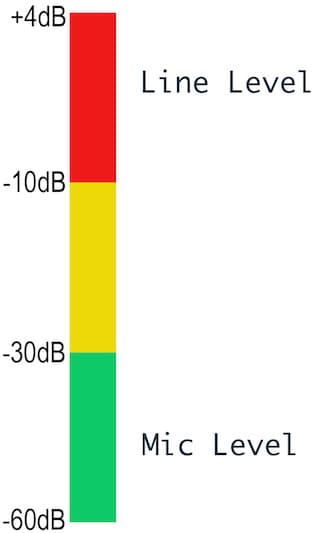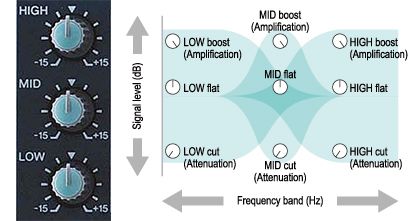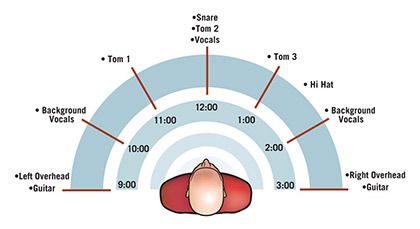Building a Basic Mix

Mixing is a key component in the recording and production process. Mixing is the balancing of the overall levels and frequency content of signals that are playing back for a concise listening experience.
As more sound sources are introduced, so too are the considerations for mixing. If instruments are fighting one another for loudness in the mix, it may be incorrectly perceived by the listener. Even worse, other signals may become hidden behind the loudness and not heard by the listener at all. The worst scenario would having too much “clutter” or a “muddy mix” where there is too much happening at once leading to a discomfortable (or even disorienting) experience. A basic understanding of mixing can prevent that and more with brightening results.

How to Measure Sound
Audio is measured in decibels (dB). Typically, audio is visualized with level meters. There are other advanced tools for visualizing sound. In the case of mixers.


Tools for Basic Mixing
- Volume / Gain
- Equalization
- Panning
- Audio FX
Volume / Gain
Many argue what makes them different. However, both volume and gain have the ability of to boost or reduce signal levels. The incoming audio signal is multiplied by a value. How those values are scaled depend on the specifications of the device.

Equalization
Controlling the frequency content of a signal. Surgical craft sound by boosting or reducing frequencies in different ranges. This works exactly the same as it does for controlling sound in cars (Hi, Mid, Low). Only, now this control is available on every channel. Blend sound not only by volume but frequency!

Panning
When working with multichannel audio, the final result tends to play from two or more speakers. Stereo signals have a signal for Left & Right output

Considerations
Retaining Healthy Levels
Keep an eye on gain stages and meters. Regardless of the processing used, it is important to always retain healthy signal levels. Avoid clipping and boosting the signal floor noise. Especially for the input levels. If there is any problems at the input, they will be present in the entire signal chain.
Carving Frequencies
Some of the frequencies of a signal may not be audible, however, it does not mean it isn’t impacting the final mix. The kick and snare are two complimentary components of the drums. To make them clearer in them mix, it is common to remove the low-end (bass) frequencies of the snare so that it doesn’t interfere with the “thump” of the kick drum. By removing the low-end of the snare, there is more room for the kick drum and other sounds to breathe in the mix. Many recommend reducing frequencies from 250 herz and below. Apply this concept considerably with many instruments that might not need the low end frequency content.
Achieve surgical accuracy with Bandpass filters that can sweep a wide range of frequencies. Sharply remove very specific frequencies that are problematic in the mix.
Embracing the Stereo Field
The panning of signals can improve the clarity of a mix by “positioning” sounds between the speakers otherwise known as the “stereo field”. Many will use this concept for layering guitars or overhead drum mics between left & right.